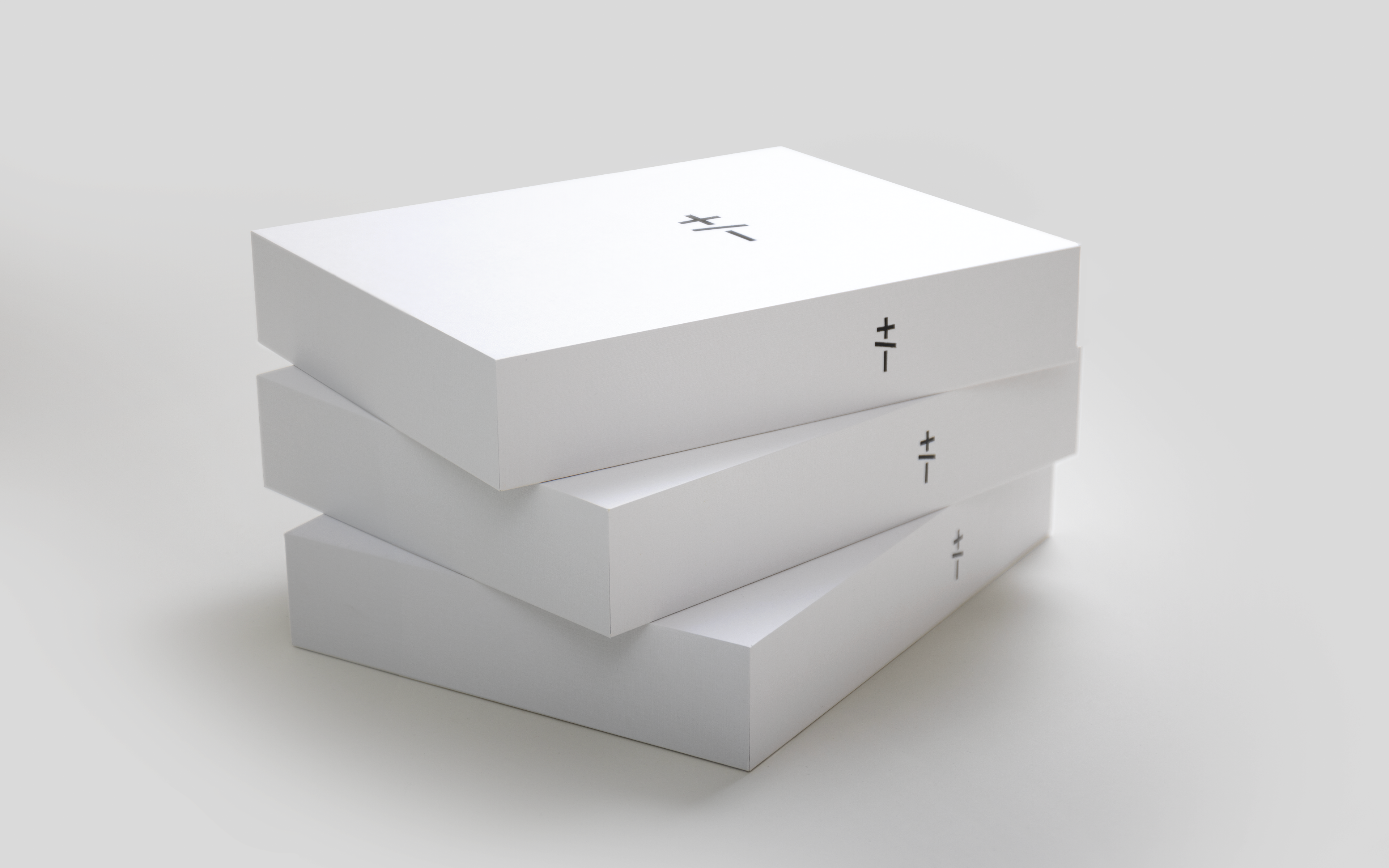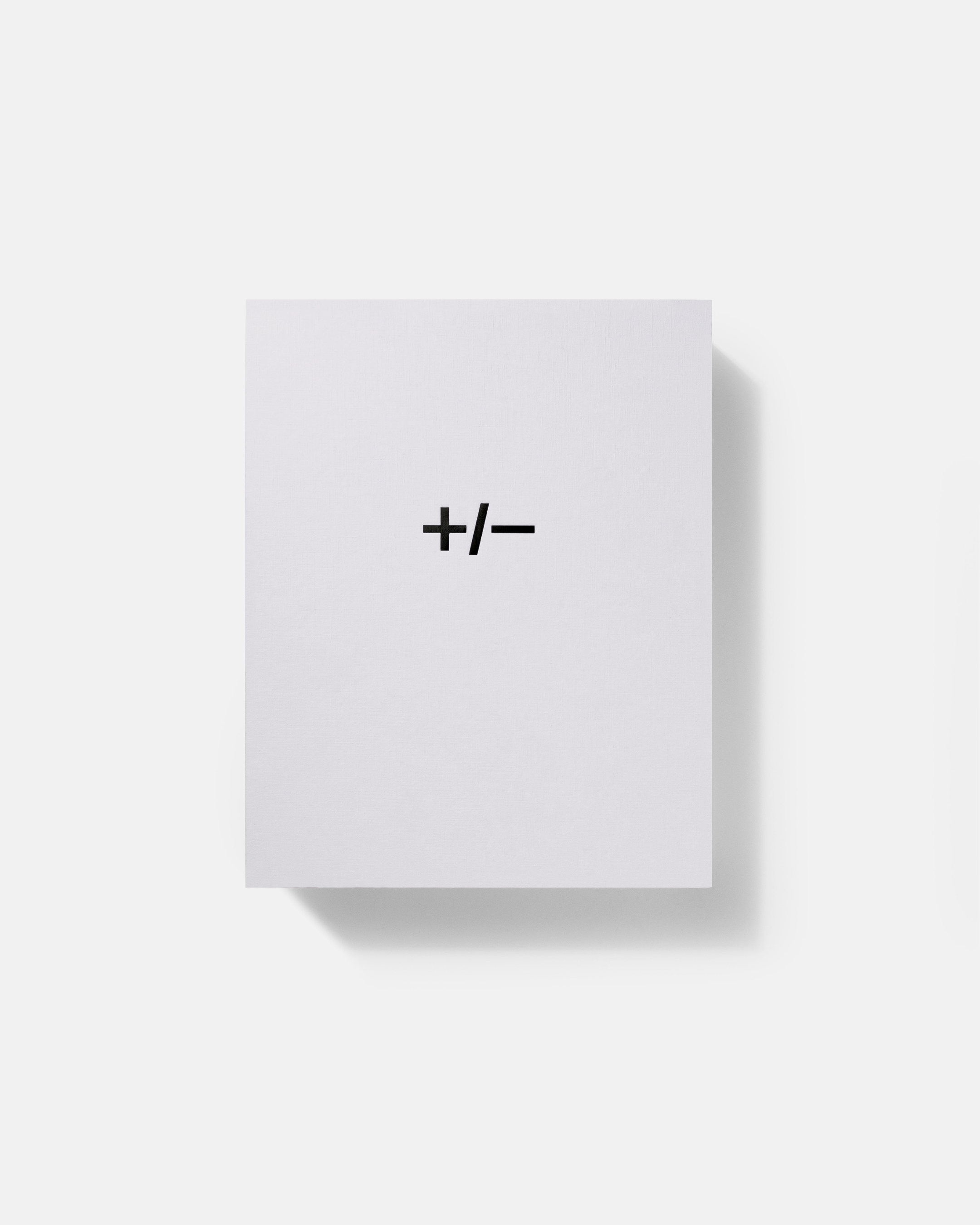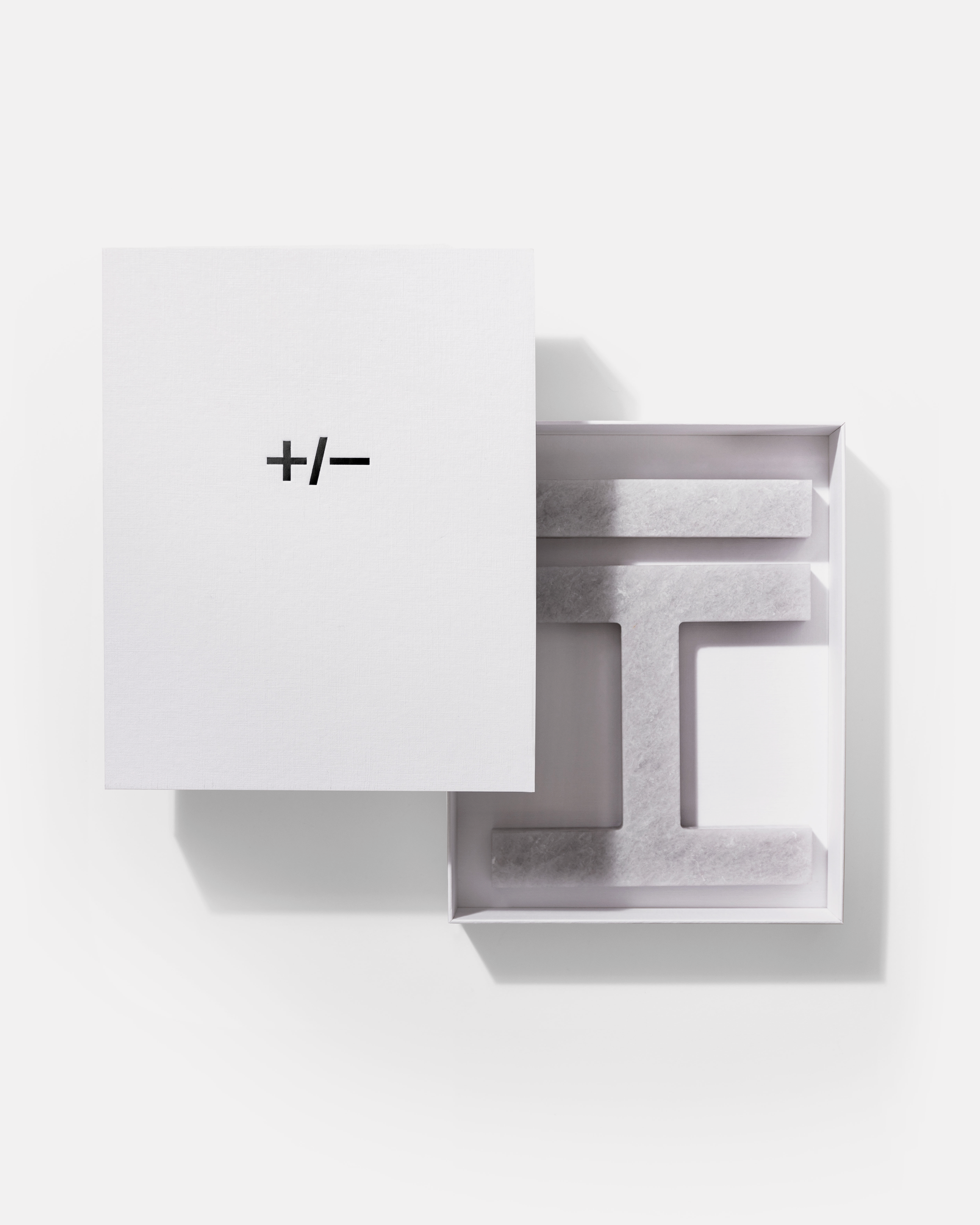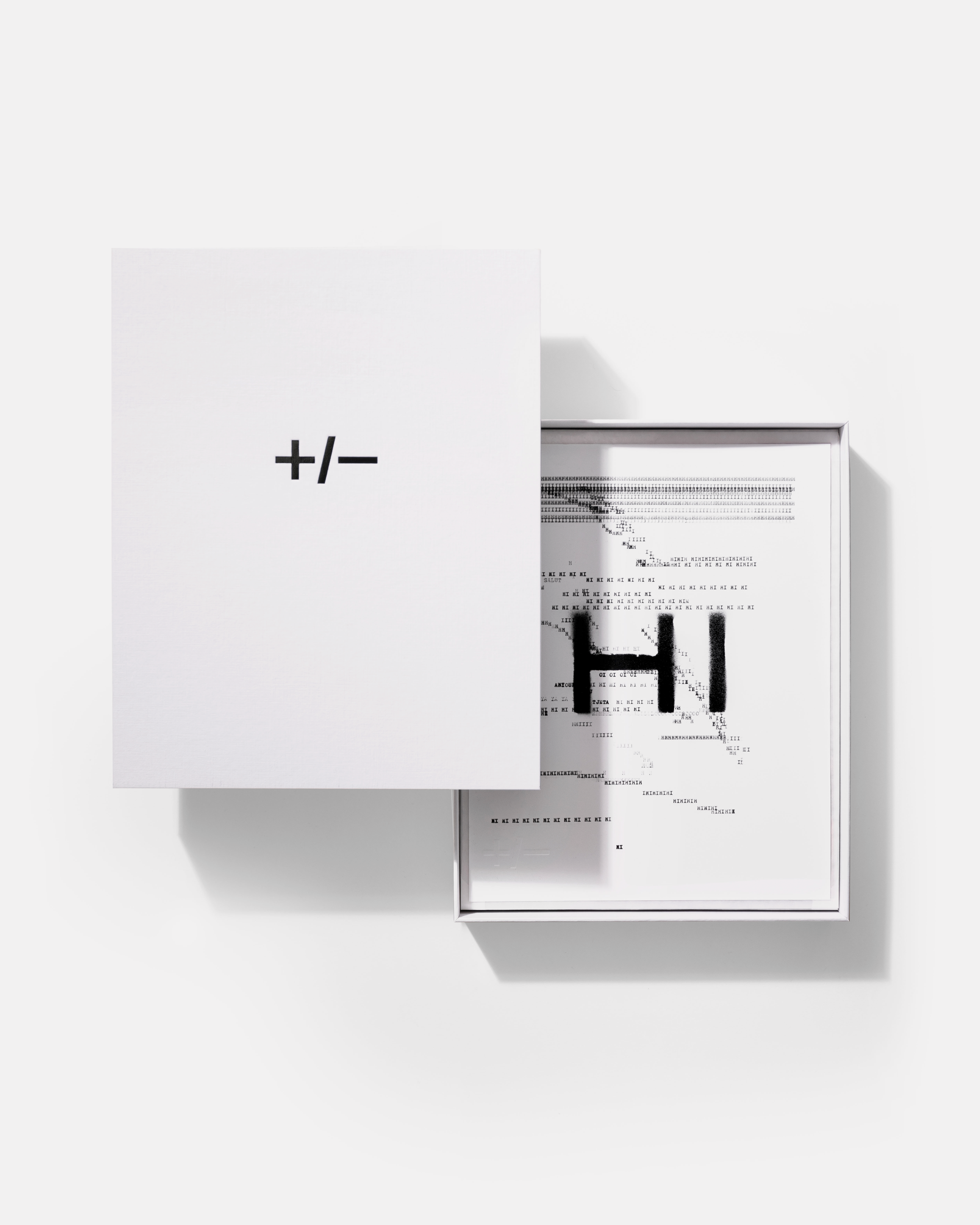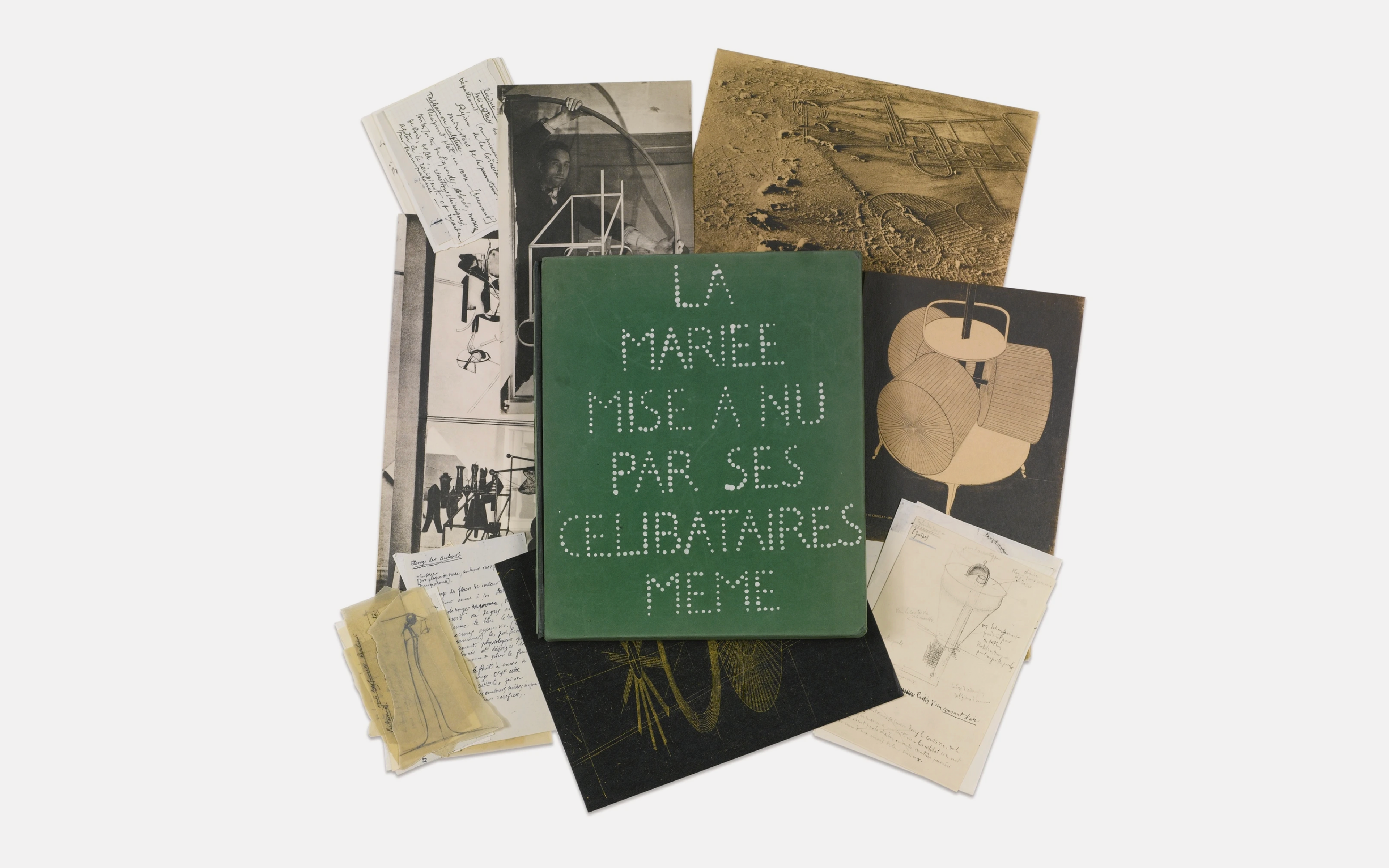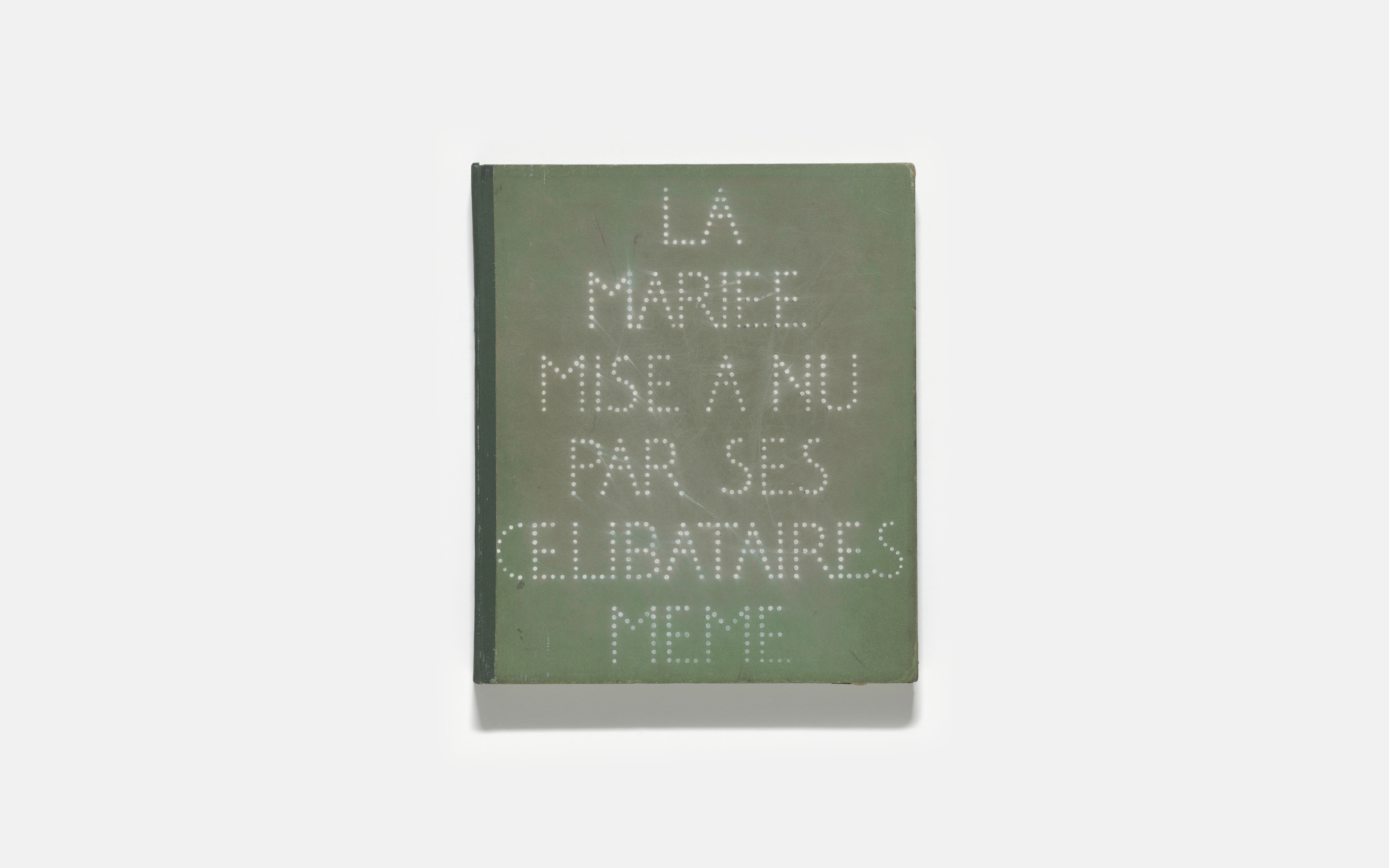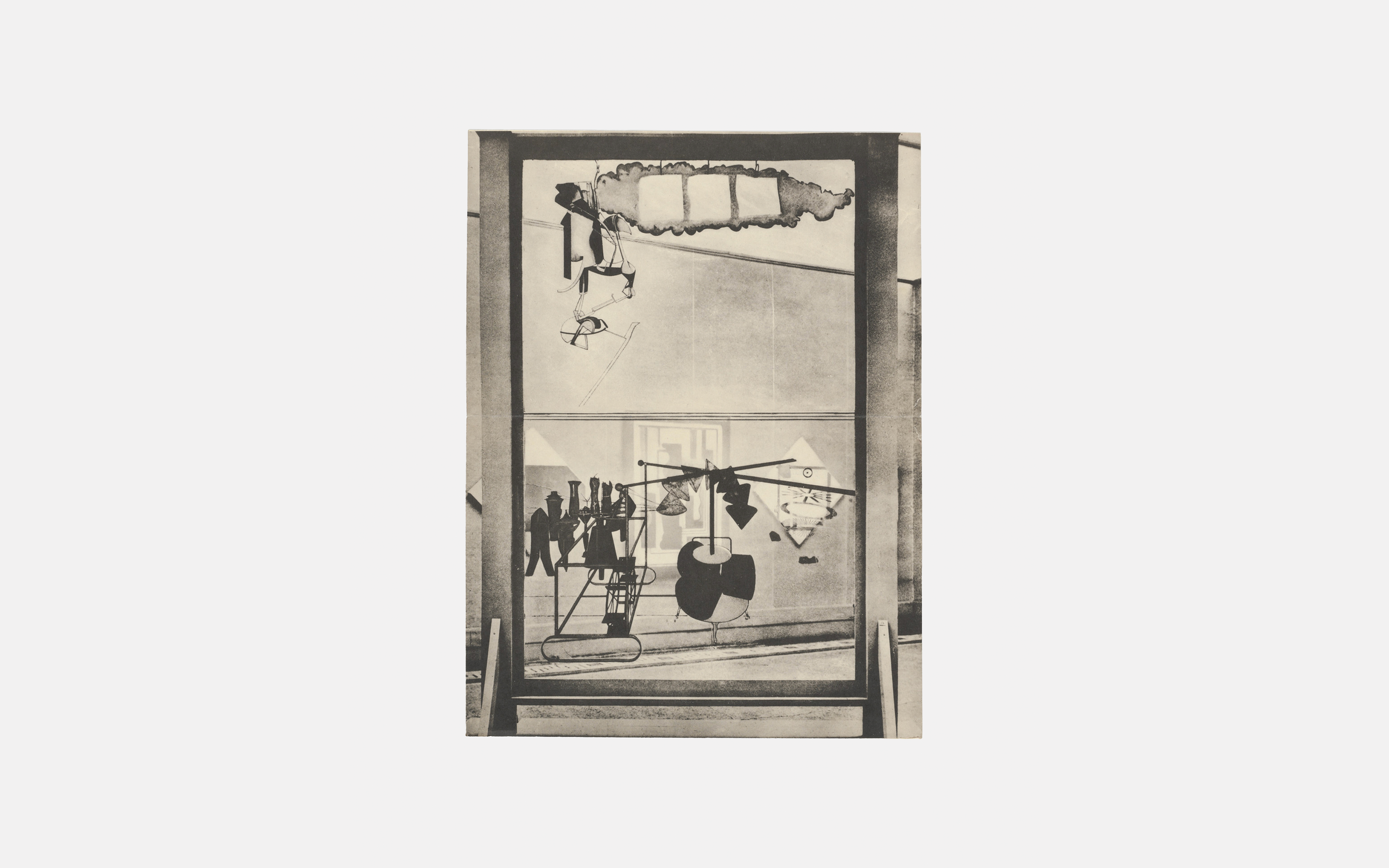The 'White Box' project is an ongoing series of limited editions by SPIN, identical from the outside but each containing a one-off collection of prints and objects. No two boxes are exactly the same, each one an artwork in its own right as well as a kind of deconstructed exhibition (the ‘white box’ perhaps echoing the ‘white cube’ model of the gallery space). The box’s manageable size means it can be taken anywhere, while the unfixed order of its contents gives them endless possibilities for being removed, displayed and recombined; in this way, the owner of each box also becomes its curator. The 'White Box' series also marks the continuation of a story that has unfolded across the landscape of modern art: the use of the box as a medium. Formally, the box is innately secretive, suggesting itself as a carrier of hidden knowledge. But it also has the air of the official or bureaucratic: a repository for preserving documents, a container of information destined to be kept in storage. The story of modern art’s fascination with the box — as a crucial device for conceptual art, an attractively open-ended medium, or a way to blur the boundaries between artist and curator — often returns to the strange overlap between these qualities.
SPIN, HI White Box
Between 1915 and 1923, Marcel Duchamp produced one of his defining works: a nine-foot-tall sculpture often referred to as The Large Glass but titled in full The Bride Stripped Bare by Her Bachelors, Even. Made from materials including metal, glass and dust, it depicts — though ‘depicts’ is hardly the word — a Dada seduction scene between the ‘bride’ and her ‘bachelors’, at once cold and funny, whose participants are rendered in abstract, mechanical forms. The sculpture is frequently described as his magnum opus, but Duchamp in fact made two works with this title: The Large Glass and a counterpart, known as The Green Box. Published as an edition of 320 in 1934, each box contained 94 ‘facsimiles’ of notes and sketches that Duchamp had made in preparation for the Large Glass, ranging from mechanical diagrams of the sculpture to complicated, tongue-in-cheek ‘explanations’ of the artwork and its meaning. These were, supposedly, reproduced exactly as Duchamp had first written or drawn them, down to the type of paper and ink — a characteristic parody of the notion of artistic authenticity. According to Duchamp, the Green Box had to be consulted when viewing the Large Glass: ‘as I see it, [the Large Glass] must not be looked at in the aesthetic sense of the word. One must consult the book and see the two together. The conjunction of the two things entirely removes the retinal aspect that I don’t like.’1 For him, a purely visual experience of art was inadequate without some kind of intellectual element. What the Green Box suggests is that the process behind an artwork is at least as important as the final product, that the category of ‘art’ doesn’t just include objects, but ideas, too — revelations that would permeate the history of twentieth-century art.
Marcel Duchamp, The Bride Stripped Bare by Her Bachelors, Even (The Green Box), 1934
One year after the Green Box, Walter Benjamin published his essay ‘The Work of Art in the Age of Mechanical Reproduction’, in which he influentially argued that the technical possibility for mass-reproduction diminished the traditional ‘aura’ attached to the unique or original work of art. For Benjamin, this situation produced a shift in our understanding of art itself, which would become valued for reasons other than its authenticity.2 Shortly afterwards, continuing what he started with the Green Box, Duchamp began his Boîte-En-Valise (‘box in a suitcase’) project, producing portable boxes that unfolded to reveal 79 tiny replicas of his existing works. For Duchamp, the distinction between an original or replica had become unimportant, demonstrating in practice what Benjamin had theorised. The box was also a way of subverting the traditional modes of presenting art, questioning the institutional environments art finds itself in and the effect these conditions have on the work itself. As a container that stripped the work of context and subjected it to notions of ownership and, by extension, material desire, Boîte-En-Valise parodied the gallery by reproducing it in miniature, recasting its function as a kind of commodity fetishism. That the box had started to catch on was confirmed by Mimi Parent’s version of the catalogue for EROS (or the Exposition InteRnatiOnale du Surréalisme, held in Paris between 1959 and 1960), in which Duchamp was involved. Titled Boîte alerte (‘box on alert’), this came in an edition of 250 and was, in essence, a cardboard letterbox into which contributions, or ‘lascivious letters’, from those involved in the exhibition were posted: an unsurprisingly strange assortment of letters, pictures, booklets and surrealist objects. It is with Parent’s version of the box that its appeal for conceptual artists becomes clear, acting as a metaphor for art’s new purpose as a container of ideas.
In the 1960s, Duchamp’s ideas were picked up on by a subsequent generation of artists. The Fluxus movement, in which the ‘anything can be art’ impulse behind much of the twentieth-century avant-garde found perhaps its fullest expression, frequently produced boxes. Ben Vautier created a series of boxes, on which he wrote mantras like: ‘depuis Duchamp on peut mettre n’importe quoi dans cette boîte’ (‘since Duchamp, we can put anything in this box’). George Brecht’s Water Yam (1963), one of a number of boxes known as ‘Flux-kits’, contained ‘event-scores’ for for Fluxus ‘Happenings’; other instalments, overseen by George Maciunas, held collections of items and instructions to ‘spell your name with these objects’. Rather than being an idol of limitation, the box now playfully stood for total artistic possibility. Approaching the box from a less Duchampian angle, the mid-century artist Joseph Cornell created a series of boxed assemblages, meticulously collaged from found objects, pictures and scraps that had caught his collector’s eye. Extremely beautiful, with an inscrutable emotive power, these were constellations put together from the residue of modern life. And they take they take the concept of the art-box in a different direction: less obviously ‘ideas’-based and more concerned with aesthetics, they bestow a different kind of curatorial function upon the box than Duchamp’s subversion of the gallery space. Hinting at a semi-hidden significance, Cornell’s poetic visual narratives explore how the construction of artistic meaning takes place in the relations between objects rather than in the individual objects themselves. In the 1960s, meanwhile, George Herms produced his Zodiac Behind Glass series, a collection of wooden, glass-fronted boxes containing object-landscapes that echoed Cornell’s, each themed around a sign of the zodiac (and created during its governing period). The boxes of Cornell and Herms seem vaguely surrealist-influenced with their hints of the hidden, associative meanings between things, though this was a label Cornell rejected; surrealist or not, they’re evocations of other worlds, explorations of how we find meaning in the objects we encounter.

Joseph Cornell, The Hotel Eden, 1943
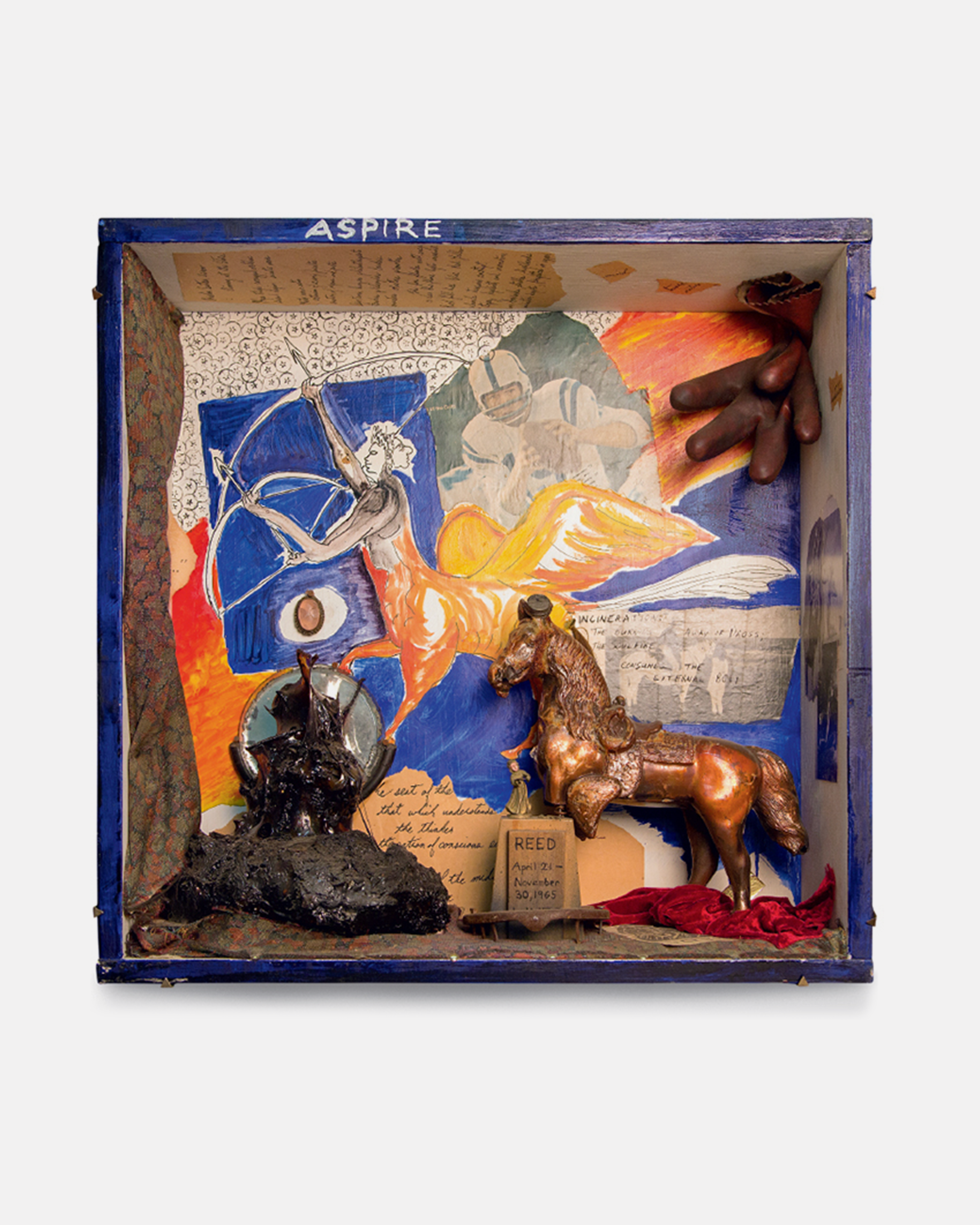
George Herms, Sagittarius Box, 1965
If Cornell is one artist to whom the term ‘surrealist’ has been perhaps tenuously applied, then another is Marcel Broodthaers, who in 1966 created I Return to Matter, I Rediscover the Tradition of the Primitives, Painting with Egg, Painting with Egg, a wooden cigar box filled with painted eggshells and decorated with labels advertising an exhibition. A poet-turned-artist, Broodthaers was fond of wordplay; in French, matière can mean both an artwork’s medium and its subject matter (here, the exact same thing). Painting with Egg is a punning reference to tempera, a type of paint derived from egg yolks; the ‘primitives’ whose tradition Broodthaers is ‘rediscovering’ are the European artists from the Middle Ages and the Renaissance who used this paint, while the repetition of ‘painting with egg’ in the work’s title refers to the layering that was needed when painting with tempera. Jokes aside, Painting with Egg subverts the painting’s aspiration towards three-dimensional representation by becoming actually three-dimensional, turning painting into sculpture. It’s a reminder of art’s materiality, of all the real-world things that create its capacity for representation, invention or fantasy; an object lesson in how art uses objects.
With the development of conceptual art, periodicals and artists’ books increasingly started to be used as sites of artistic intervention and institutional critique. The cult magazine Aspen, which ran from 1965 to 1971, achieved this not only in terms of content but also by experimenting with the formal conventions of print — each issue came, as publisher Phyllis Johnson described it, in the form of a ‘magazine in a box’. Not tied to the requirements of an established format, each edition varied heavily: Aspen’s content encompassed foldouts, records, films, essays and fiction, with contributors like John Cale, Robert Rauschenberg and JG Ballard positioning it on the leading edge of the counterculture. Aspen’s editorial strategy, as Johnson pointed out in her introduction to the first issue, actually returned the magazine to one of the original meanings of the word: ‘a storehouse, a cache, a ship laden with stores […] Since it comes in a box, our magazine need not be restricted to a bunch of pages stapled together [… and we] can put in all sorts of objects and things to illustrate our articles’. The box here appears as a formally liberating presence, allowing works across different media to be it to be brought together. Similar experiments with print were also being undertaken around the same time by the Swiss artist Dieter Roth. In 1968, Roth created the Rubber Stamp Box, for which he repurposed MUNDUNCULUM, a symbol-based alphabet he had designed the previous year. Upon opening the box, the viewer would discover stamps based on Roth’s alphabet, intended to be used for the construction of so-called ‘visual poems’ — and so would find themselves invited not only to reflect on the relation between words, images, and materials but to take part in the creation of Roth’s art themselves. The following year, Roth began working on his Gesammelte Werke (Collected Works), a kind of self-published catalogue raisonné. The twelfth instalment, whose original edition was known as the Copley Book after the award Roth had won that funded its production and was published in 1965, was less a book in the traditional sense of the word than a documentation of the process of making one: an accumulation of sketches, notes and instructions. In 1974, the book was reissued as part of Roth's Collected Works, this time in the form of an illustrated box; this version points towards another appeal of the box: as a vehicle for the impulse towards categorisation, classification, and accumulation which proliferates across postwar conceptual art.
In the mid-1970s, Andy Warhol declared himself ‘sick of the way I live, of all of this junk, and always dragging home more’.3 Given the imbrications of pop art and mundane consumer culture, it’s perhaps no surprise that he, too, became interested in the box as a medium for his work, a way of containing all this junk. (He also owned two different editions of Duchamp’s Boîte-en-Valise). In a project that ran from 1974 until his death in 1987, Warhol created 612 Time Capsules. Inspired by the sight of his assistants carrying his equipment out in containers when his famed ‘Factory’ had to be relocated, these were cardboard boxes filled with miscellaneous trinkets: flyers, gallery invitations, photographs of himself and his friends, and (of course) Campbell’s soup cans. Perhaps these collections of objects are just another instance of Warhol’s distinctively superficial gaze, an attempt to represent the world by itemising it. But they also play into the idea of chance: each box is curated, each item selected, but the contents remain apparently random in that there are no transparent, overarching themes; they are chance objects, delivered to us at random by existence. Attempts to incorporate chance or contingency into the production of art had been going on since Dada and the Surrealists — think of the cracks sustained accidentally by Duchamp’s Large Glass that he then declared part of the work, for example, or Tristan Tzara’s cut-up poetry. But the Cold War put a new spin on this concept. Traceable in John Cage’s application of I Ching divination methods to his sounds, Allan Kaprow’s Happenings, George Brecht’s investigations into ‘Chance-imagery’, even Jackson Pollock’s distinctive drip painting technique, the application of chance to the production of art represents a fusion of Cold War aesthetics with this longer-term conceptual project. When the author William Burroughs wrote that his own attempts at cut-up writing were imbued with ‘the cryptic significance of juxtaposition, like objects abandoned in a hotel drawer’, he could just as easily have been talking about Warhol’s Time Capsules.4
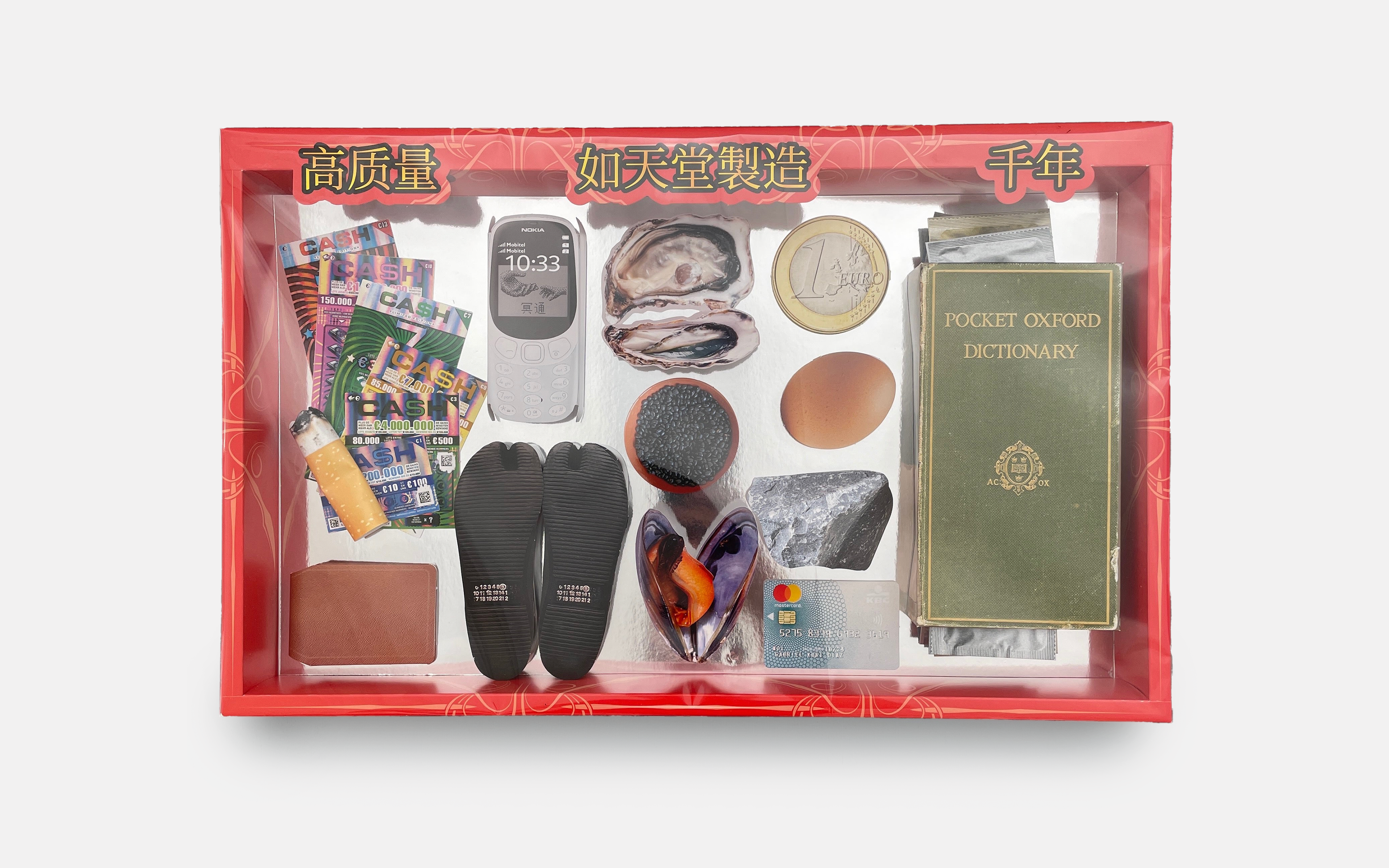
Gabriel Kuri, Offering (to Saint-Martin), 2021
More recently, a handful of cultural producers have engaged, consciously or not, with the tradition of the box as an artistic medium. For its SS21 show, fashion house LOEWE collaborated with Parisian studio M/M to create a ‘show in a box’, containing, among other things, a letter from creative director Jonathan Anderson, a notebook detailing the inspiration behind the show, reference cards for the collection’s colours and materials, die-cut silhouettes of the looks, and a miniature pop-up show. Initially designed as a solution to Covid-related restrictions, this conceit also reanimates, almost a century later, at least some of the ideas behind Duchamp’s boxed works: an emphasis on process, an artwork becoming its own exhibition, the involvement of the work’s audience in its construction. Gabriel Kuri’s 2021 Offering (to Saint-Martin), meanwhile, is a box containing paper models of various items, from a phone and a credit card to an oyster shell and a dictionary. An edition of 200, Kuri’s box is inspired by paper offerings used in Hong Kong funerals, an unsettling gloss on the box’s function as a vessel for objects of desire. There is also the output of Visionaire, a publisher and agency who since 1991 have worked with artists and designers, from John Baldessari to Comme des Garçons, to produce limited editions that often come in the form of the box; or of Les Ateliers Wombat, a studio who have produced ‘Artist Boxes’ in collaboration with the likes of Stanley Kubrick, JR and the Velvet Underground. If the box was originally, almost a century ago, a way of disrupting conventional approaches to art, then why has it acquired a new life of its own today? Perhaps the prospect of becoming the curator of our own artwork has a particular appeal for us. The critic and theorist Fredric Jameson was surely right when he argued that the ‘emblematic figure of the curator’, the ‘demiurge of these floating and dissolving constellations of strange objects we still call art’ has become ‘emblematic’ for the twenty-first century.5 Modern art has often aimed to undo romanticised notions of artistry, recasting aesthetic creation as the appropriation and recontextualisation of existing images (Robert Rauschenberg, Peter Blake, Gerhard Richter) or as the arrangement of pictures and data (Baldessari, Ed Ruscha, Bernd and Hilla Becher). If this amounts to a replacement of the author-function with a kind of curator-function, then artists across media today are increasingly understanding their own role in these terms. Anderson, for example, claims not to think of himself as a fashion designer, but as a curator: ‘what I think I ultimately do [...] is curate [...] It is about taking all these components and arranging them in a way that makes sense’.6 Perhaps it is this narrative of modern art which finds its most visible demonstration in the box, which has long been a tool for making art conceptual and today specifically offers artists as a way to internalise the work of curation. From social media and virtual reality to advertising and branding, we live amidst a flood of images and aesthetic styles; our lives are increasingly about sorting and arranging them. The fact that the contents of each 'White Box' are made available for different combinations and frames of reference means that it speaks to this culture of the present, in which aesthetic forms are endlessly recombined and recontextualised. The box has emerged as an ideal form for art interested not just in individual images, objects and media but also in staging encounters between them.
.jpg)
LOEWE's show in a box, 2021
